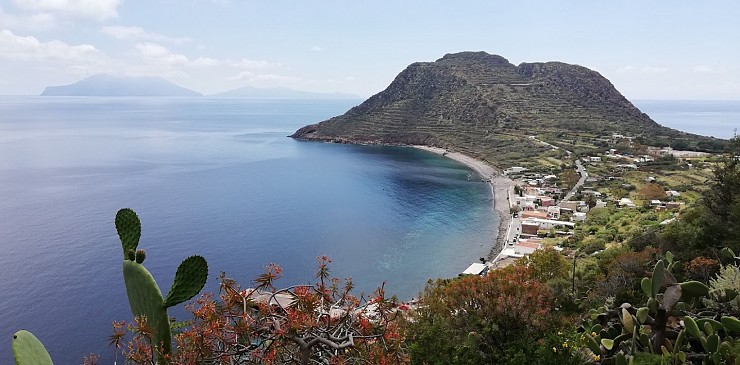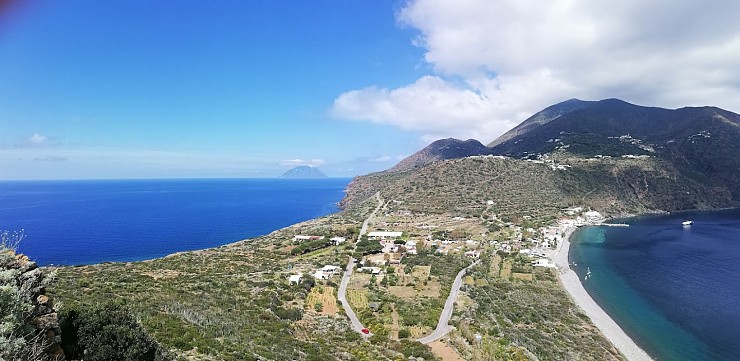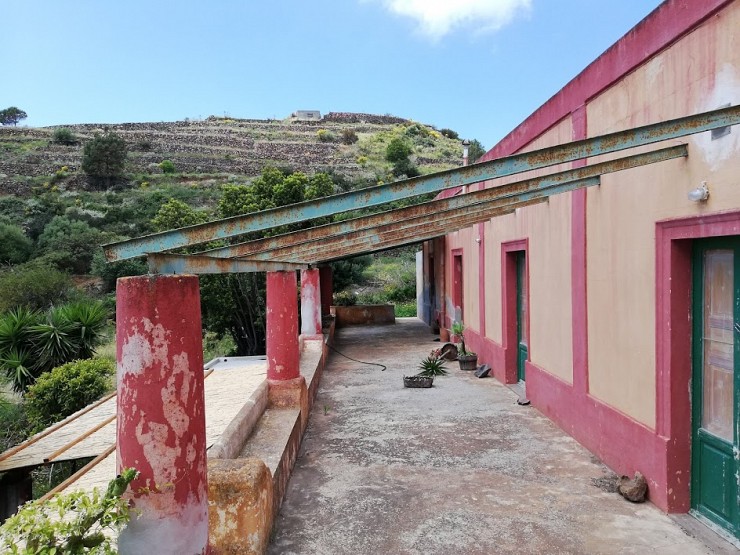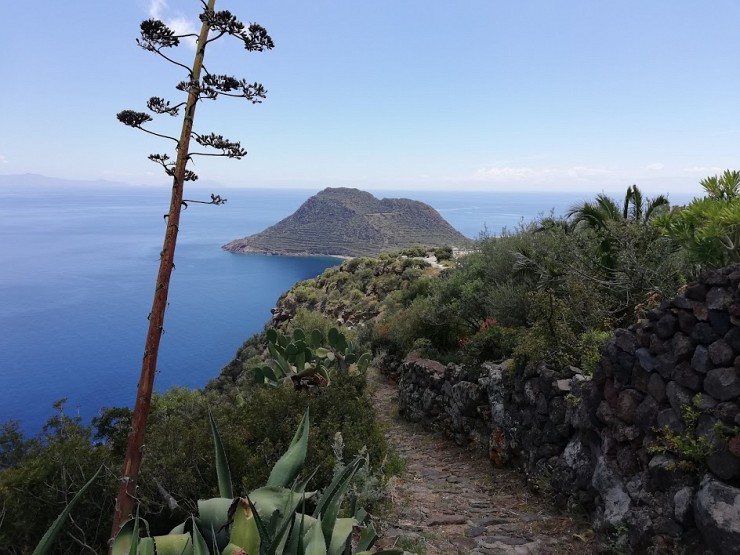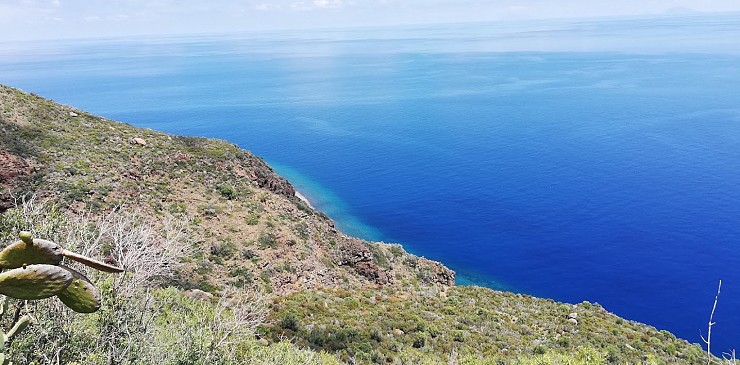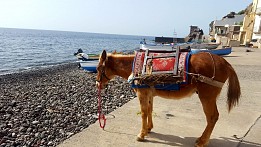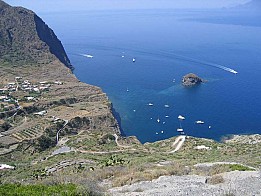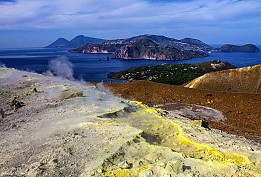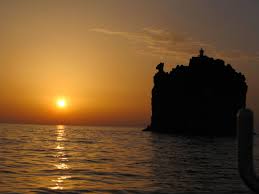The island covers 9.5 km² of which only a small part is inhabited, is of volcanic origin, its upper part is made from the mountain "Fossa Felci" which is high 774 meters above sea level and is an extinct volcano . The marvelous coasts are in some places overhanging the sea while others are characterized by flat beaches as Capo Graziano. Imposing nature of eruptive rocks rise from the sea as cliffs, the most famous being "La Canna" is inevitable visit of each tour of the island by sea.
Also present were numerous caves, the most 'famous of which is the Grotta del Bue Marino, crystal blue backdrop. The coasts of Filicudi are a wonder of nature, and are worth to be admired. There are numerous coves and bays, rich in ravines, where the crystal clear water lapping against the black lava rock that plunges into the sea and continues under water, creating winding paths and submarine valleys of rare beauty, which also offer the occasional sub without constraining for deep dives to admire the spectacle of nature and the underwater life.
The volcanic nature and the erosion of weathering and marine created stunning geological monuments, such as the cave of Maccatore, lava leads in the sea called "Perciato" to Siccagni, and the famous Grotta del Bue Marino (where he lived not too many decades ago a colony of sea lions). The lobby of the cave opens up a very large cavity, the bottom is illuminated by sunlight reflected and refracted creates crystalline vivid blue light games, that make the fixed destination place for each tour by boat. To the west of the island of Filicudi emerge the Montenassari rocks, Mitra, the notary, and especially that of cane, about 74 meters away, surrounded only by sea, and natural habitat of endemic lizards found only there and evolved them independently.
To the north west of the island, very close to the coast, it lies the rock said "the Giafante". At that point the coast is very rugged and full of coves and bays wonderful places to swim. The beach is shallow, clear, shimmering in green and blue.
Filicudi, from the paleontological point of view, it is remarkable the Capo Graziano peninsula southeast of the island, as a venue for various and vast prehistoric settlements dating mainly from the Neolithic to the Bronze Age and later. A first very large settlement, but which have been excavated so far only a few oval dwellings, it extends the Piano del Porto on the southern coast of the isthmus that connects the Montagnola to Capo Graziano in locations Filo Braccio and near the ruined house Lopez (can be attributed to the XVII-XVIII centuries BC).
A wider settlement other is on the height of Montagnola of Capo Graziano (E 'indicated by tourist signs as "Villaggio preistorico", and is easily reached on foot from the port). The marine archeology in different campaigns more or less systematic research, has recovered from at least nine different shipwrecks in the treacherous chief Graziano, Mycenaean amphora of the fifteenth century BC, different groups of amphorae dating from the fourth century B.C until late imperial age and bronze cannons on a seventeenth-eighteenth century A.D. warship The material coming from the excavations and marine recovery is exhibited at the Museum of Lipari.













